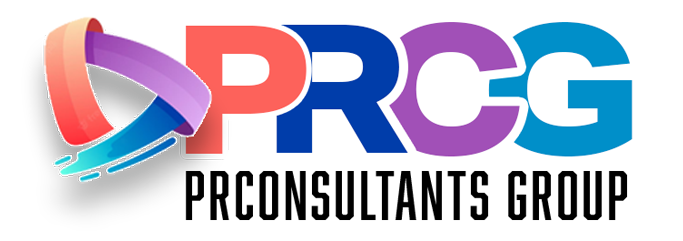The Shift in Traditional Media Strategies
A few years ago, the reality show All on the Line featured fashion insider Joe Zee helping struggling designers rebuild their brands. In one episode, Zee worked with a designer whose label had nearly disappeared from public view. The VP of Marketing dismissed the suggestion to invite bloggers to cover the brand’s Fashion Week show.
Traditionally, front-row seats were reserved for celebrities and legacy media. Instead, Zee gave three fashion bloggers premium seats. The result was immediate. These bloggers engaged their audiences in real time across platforms like Twitter and Instagram, reconnecting the brand to its target audience and generating renewed visibility.
That success reflects what public relations professionals now recognize: influencers are reshaping how audiences discover and engage with brands.
Why Influencers Matter for Public Relations, Not Just Marketing
Influencer marketing often gets categorized under social media or digital advertising. But for public relations, influencers serve a different and arguably more powerful role. Influencer partnerships represent earned third-party credibility — the same type of trust PR generates through media placements.
Influencers drive conversations that extend far beyond one-time promotions. Their content fuels word-of-mouth, amplifies media visibility, and builds long-term brand credibility in ways traditional ad placements rarely achieve. In this context, influencers become an extension of public relations—strengthening brand narratives across earned, shared, owned, and paid channels.
The Rise of Influencers in Modern PR
Influencers—whether celebrity-level or niche content creators—have built engaged communities across digital platforms. Many are not traditional celebrities. Instead, they’re everyday individuals who’ve cultivated large, loyal audiences through relatable, authentic content.
Gen Z’s prioritization of authenticity has elevated influencers’ value. Microinfluencers (10,000–100,000 followers) and nano influencers (under 10,000 followers) often deliver higher engagement rates and greater trust compared to larger influencers with broader but less engaged audiences.
Unlike traditional spokespeople, influencers speak in their own voice. Their audience expects—and rewards—that individuality. The personal tone resonates, making influencer-driven campaigns feel conversational, not commercial.
Micro vs. Nano Influencers: The Underrated Value
For many PR programs, influencers with smaller but highly engaged audiences outperform larger influencers when it comes to credibility and conversions. These creators:
Have stronger personal relationships with their followers
Interact regularly through comments, messages, and live streams
Maintain niche authority in specific verticals
Appear less scripted and more approachable
Research from HubSpot on microinfluencer engagement rates supports that smaller creators often outperform celebrities in trust and conversion.
Influencer Relations Require Long-Term PR Management
Influencer relations mirror traditional media relations. Successful partnerships are not one-time transactions but ongoing, mutually beneficial relationships. The most effective PR-driven influencer programs include:
Careful vetting and alignment with brand values
Open communication and shared creative control
Clear disclosure of paid relationships
Strategic planning that integrates influencers into larger PR campaigns
Influencers who feel like collaborative partners rather than short-term contractors are more likely to deliver content that resonates with their audience and sustains engagement over time.
Related: Harvard Business Review on building long-term influencer relationships
Influencers Have Become a Core Element of Strategic Campaigns
As influencer marketing evolves, brands are realizing there is no universal playbook. The qualities that make influencers powerful—authenticity, trust, and personal connection—demand customized approaches for every campaign.
The key to long-term success lies in maintaining brand alignment while allowing influencers creative freedom to present messages in ways that feel natural to their audience. The best influencer programs are purposefully flexible, audience-first, and continually evaluated for results.
Measurement Is Evolving
As influencer partnerships have matured, so have the tools to measure success. PR professionals now use analytics that move beyond basic reach and impressions to assess:
Earned media value (EMV)
Engagement quality and sentiment
Brand mentions and share of voice
Website traffic and lead generation tied to influencer activity
SEO value via influencer-created backlinks
For a detailed model, see the Association for the Measurement and Evaluation of Communication’s (AMEC) Integrated Evaluation Framework.
This deeper measurement allows brands to connect influencer content directly to PR goals, business outcomes, and reputation metrics.
Disclosure and Compliance Are Essential
As the influencer landscape grows, so do regulations. Agencies and brands must ensure every influencer partnership follows legal requirements, including:
Full FTC-compliant disclosures on sponsored content
Clear labeling of partnerships across all platforms
Transparent communication with influencers around expectations
The Federal Trade Commission’s guidelines for influencer marketing remain the gold standard for compliance.
Failure to comply risks damaging not only influencer relationships but also a brand’s reputation and consumer trust. Ethical, transparent influencer programs are non-negotiable in effective PR campaigns.
Influencers as Crisis Assets
Beyond marketing, influencers are increasingly playing a role in crisis communications. In moments when a brand’s reputation is challenged, trusted influencers can serve as credible third-party validators. They can:
Provide calm, fact-based explanations to audiences
Reinforce brand messages with an authentic voice
Help stabilize public sentiment when official statements are insufficient
When managed strategically, influencer relationships can support crisis response efforts by offering audiences trusted voices they already follow and respect.
The Future of Influencer Engagement in Public Relations
Influencers are no longer a passing trend. Their role in public relations continues to expand as brands shift from controlled messaging to audience-driven engagement. While tools, platforms, and strategies will continue to evolve, one principle remains constant: authentic relationships drive results.
For public relations professionals, influencers represent an opportunity to amplify earned media, build trust, and strengthen brand narratives in ways that reflect how today’s audiences consume and share information.
Ready to Elevate Your Brand’s Influence?
At TrizCom PR, influencer engagement isn’t a tactic—it’s a strategy built on trust, credibility and long-term brand authority. We align the right voices with your brand to amplify earned media, build lasting relationships, and drive measurable business results across every channel.
Whether you're just beginning to explore influencer partnerships or looking to optimize an existing program, our team has the expertise, network and data-driven approach to deliver meaningful outcomes.
Let’s start the conversation. Contact TrizCom PR today and discover how authentic influencer engagement can transform your public relations strategy.




